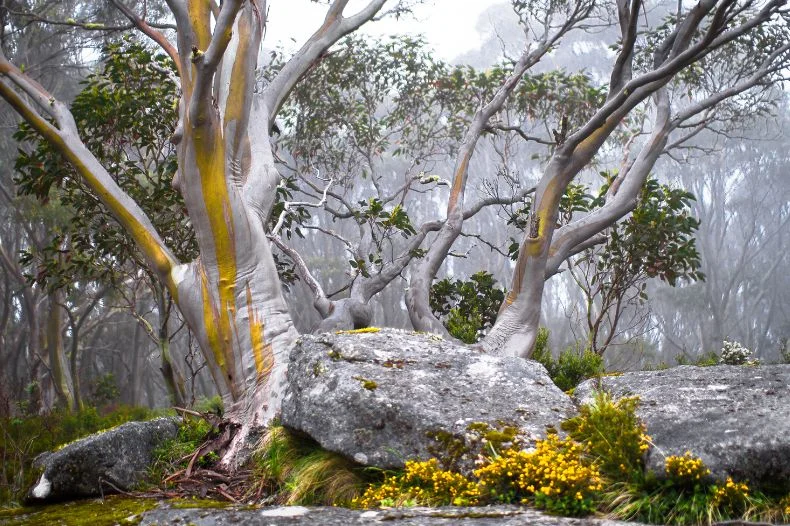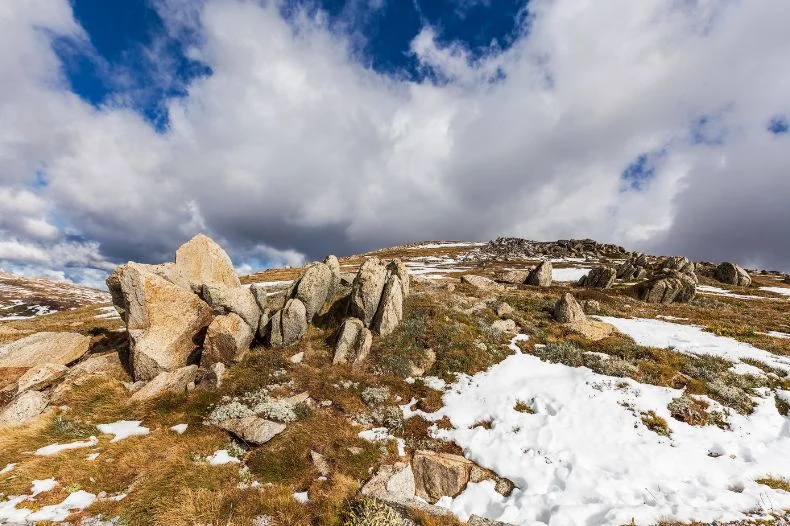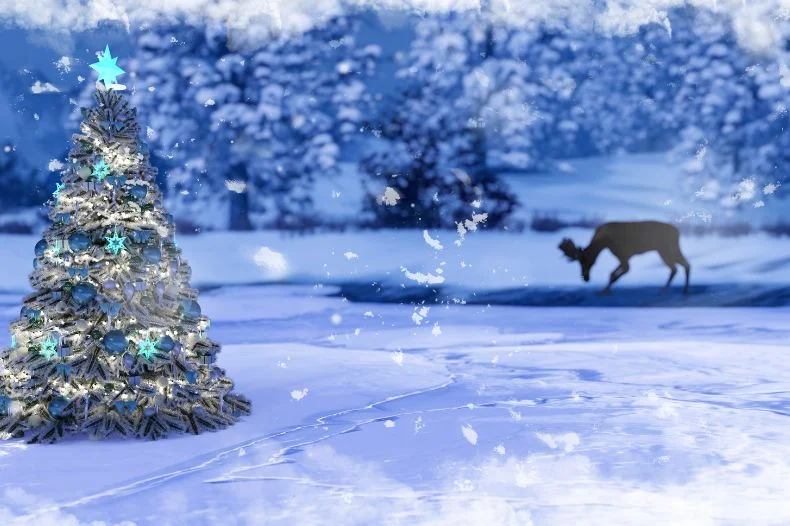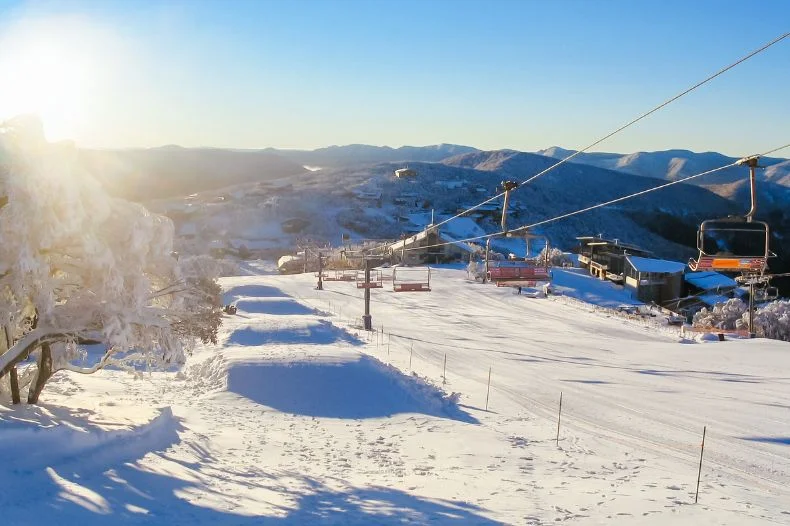
The question of “Does it snow in Australia?” is a common inquiry, and the answer is a resounding yes. Contrary to the stereotypical image of a perpetually sun-soaked land, Australia witnesses snowfall during the winter months in specific regions, particularly in the southeastern parts of the country.
The Australian Alps, encompassing areas such as the Snowy Mountains in New South Wales and the Victorian Alps, are well-known for their winter snow cover. These regions receive consistent snowfall, transforming the landscape into a winter wonderland, and attracting both locals and tourists alike.
The phenomenon of snow in Australia is not limited to the alpine regions. In fact, it’s not uncommon for snowfall to occur in unexpected places, such as the Grampians in Victoria or the higher elevations of the Australian Capital Territory.
This sporadic occurrence adds an element of surprise to the Australian climate narrative and underscores the importance of understanding the intricacies of snowfall patterns. The question “Does it ever snow in Australia?” becomes particularly intriguing when exploring the more temperate and arid regions.
While it might not be a regular occurrence, instances of snowfall in unexpected areas can captivate the public’s attention and highlight the dynamic nature of Australia’s climate. Understanding these patterns is crucial for various reasons, ranging from environmental considerations to practical implications.
Unveiling the Mysteries of Snowfall Patterns and Environmental Significance
Australia, renowned for its diverse landscapes and vibrant ecosystems, boasts a climate that spans from tropical in the north to temperate in the south.
However, one might be surprised to learn that snowfall is indeed a part of Australia’s meteorological tapestry, albeit in specific regions and during particular times of the year.
Australia’s climate is predominantly characterized by its aridity and warmth, with large areas experiencing a semi-arid or desert climate. The continent’s vast size contributes to a remarkable climatic diversity, ranging from the scorching heat of the Outback to the temperate climates along the southern coasts.
While much of the country experiences a predominantly dry climate, there are pockets where snowfall graces the landscape.
The significance of comprehending snowfall patterns in Australia extends beyond the mere novelty of witnessing snow in unexpected places. It holds environmental importance as snowfall contributes to the overall water resources of the continent.
The gradual melting of snow during the warmer months feeds into rivers and reservoirs, impacting water availability for agricultural, industrial, and residential purposes.
Moreover, understanding snowfall patterns is essential for managing the impacts of climate change. Australia, like many other parts of the world, is experiencing shifts in weather patterns and temperatures.
Monitoring snowfall trends helps scientists and policymakers assess the broader implications of climate change and develop strategies to mitigate its effects.
Where does it snow in Australia?

Australia, celebrated for its sun-drenched scenery, hosts charming realms of winter magic where snowfall adorns the landscape. Investigating the locales touched by snow and delving into the subtle nuances of snowfall variations across the nation reveals an intriguing facet of Australia’s climate.
The primary question of “When does it snow in Australia?” is best answered by exploring the designated snowfall regions.
Predominantly, the Australian Alps steal the winter spotlight, with the Snowy Mountains in New South Wales and the Victorian Alps being key players, these alpine regions, characterized by elevated terrains, welcome consistent snowfall during the winter months, transforming the landscapes into picturesque scenes reminiscent of a European winter.
However, the allure of snow is not confined to the Alps alone. Surprising to some, regions like the Grampians in Victoria and elevated areas in the Australian Capital Territory witness sporadic snowfall, adding an unexpected touch of winter magic to the more temperate zones of the country.
Differences in Snowfall Patterns in Australia
Australia’s vast expanse results in varied snowfall patterns across different regions. The timing and intensity of snowfall can differ significantly, creating a nuanced tapestry of winter experiences.
The southern states, including Victoria and Tasmania, generally experience more consistent and substantial snowfall compared to the northern regions.
The differences in altitude also play a pivotal role in shaping snowfall patterns. Higher elevations, such as those found in the Australian Alps, receive more prolonged periods of snow cover compared to lower-lying areas.
This variability in snowfall patterns contributes to the unique charm of Australia’s winter, showcasing the diversity within the country’s climate.
Does it snow in Australia? Typical Snowfall Season in Australia

Australia’s snowfall season, though not as widely known as in some other parts of the world, unfolds as a captivating chapter in the country’s meteorological narrative.
Understanding the intricacies of the typical snowfall season and the various factors that influence its timing and duration provides valuable insights into Australia’s climate dynamics. The snowfall season in Australia typically occurs during the winter months, from June to August.
During this period, the southern regions, particularly the Australian Alps, transformed into snow-laden landscapes. The season is characterized by a drop in temperatures, often below freezing, creating ideal conditions for snow formation and accumulation.
In the alpine regions, the snowfall season brings with it not only a picturesque white blanket but also a surge in tourism and recreational activities.
Ski resorts, nestled in the Snowy Mountains of New South Wales and the Victorian Alps, eagerly await the arrival of winter enthusiasts seeking the thrill of alpine sports amidst the pristine snow-covered peaks.
Factors Influencing Timing and Duration
Geographical Location:
The geographical location plays a pivotal role in determining the onset and duration of the snowfall season. The southern states, including Victoria, New South Wales, and Tasmania, are more susceptible to prolonged and consistent snowfall due to their proximity to the Australian Alps and higher elevations.
Altitude and Elevation:
Altitude is a critical factor influencing the timing and duration of snowfall. Higher elevations, such as those found in the Australian Alps, experience cooler temperatures for more extended periods, fostering ideal conditions for sustained snow cover.
Lower-lying areas may witness sporadic snowfall but lack the longevity associated with higher altitudes.
Oceanic Influences:
Australia’s surrounding oceans contribute to its climate dynamics. The Southern Ocean, in particular, influences the moisture content and temperature, impacting the intensity and duration of snowfall.
Oceanic patterns, such as the Southern Annular Mode (SAM), can influence the frequency and strength of cold fronts that bring snowfall to the southern regions.
Climate Change Variability:
The overarching impact of climate change introduces an additional layer of complexity to Australia’s snowfall patterns.
Changes in temperature and precipitation patterns can alter the traditional timing and duration of the snowfall season. Scientific monitoring and research are crucial for understanding and adapting to these evolving climatic trends.
Weather Systems and Fronts:
The movement of weather systems and fronts significantly influences the timing and intensity of snowfall. Cold fronts sweeping across the southern regions bring plummeting temperatures and precipitation, contributing to the formation of snow. The interaction of these atmospheric phenomena shapes the ebb and flow of the snowfall season.
Australia’s snowfall season, though confined to specific regions, is a fascinating interplay of geographical, climatic, and environmental factors. The winter months bring not only aesthetic beauty to the alpine landscapes but also economic and recreational opportunities.
By comprehensively examining the factors that influence the timing and duration of snowfall, scientists, policymakers, and enthusiasts gain valuable insights into the dynamic nature of Australia’s climate, facilitating informed decision-making and sustainable management of these unique ecosystems.
Popular Activities and Attractions during snow

Australia’s snowfall season, a well-kept secret for some, unfolds a winter wonderland that beckons enthusiasts and adventure seekers alike.
As we delve into the popular activities and attractions during this magical season, coupled with recommendations for those eager to experience the snow, the question of “When does it snow in Australia?” becomes the gateway to a unique and enchanting journey.
Skiing and Snowboarding:
- The Australian Alps, particularly the Snowy Mountains in New South Wales and the Victorian Alps offer premier skiing and snowboarding opportunities. Boasting well-groomed slopes and modern facilities, ski resorts such as Perisher and Thredbo attract both beginners and seasoned enthusiasts seeking the thrill of alpine sports.
Snowshoeing and Cross-Country Skiing:
- For those desiring a slower pace and a closer connection to nature, snowshoeing and cross-country skiing are ideal. National parks within the alpine regions provide designated trails, allowing visitors to explore the serene winter landscapes at their own pace.
Snow Play and Tobogganing:
- Families and casual visitors can revel in the joy of snow play and tobogganing. Specially designated areas offer safe environments for building snowmen, engaging in snowball fights, and enjoying the simple pleasures of a snowy day.
Winter Festivals:
- Snowfall season brings with it a flurry of winter festivals and events. From vibrant celebrations in ski villages to cultural festivals highlighting the beauty of winter, these events provide a unique blend of entertainment, art, and local flavors against the backdrop of a snow-covered landscape.
Scenic Alpine Drives:
- Driving through the snow-covered alpine landscapes is an activity in itself. The journey to the snowfields unveils breathtaking vistas, with snow-capped peaks and frost-kissed valleys creating a picturesque tableau.
Recommendations for Visitors During Snow in Australia

Plan Ahead:
- Given the popularity of the snowfall season, especially in ski resorts, it is advisable to plan and book accommodations well in advance. This ensures a seamless and enjoyable experience during your visit.
Dress Appropriately:
- Layered clothing, waterproof gear, and sturdy footwear are essential for staying warm and comfortable in the snow. Be prepared for varying weather conditions and temperature drops.
Check Weather and Road Conditions:
- Snowfall can impact road conditions, so it’s crucial to check weather forecasts and road conditions before embarking on your journey. Stay informed about any potential closures or restrictions.
Explore Beyond Ski Resorts:
- While ski resorts offer fantastic experiences, exploring the surrounding national parks and alpine areas can provide a more intimate encounter with Australia’s winter landscapes. Consider venturing off the beaten path for a unique adventure.
Embrace the Local Culture:
- Winter festivals and events showcase the vibrant local culture and community spirit. Attendees can immerse themselves in the festivities, savoring local cuisine, arts, and entertainment unique to the snowfall season.
Experiencing the snow in Australia is a captivating journey filled with diverse activities and attractions. As the question “When does it snow in Australia?” opens the door to winter’s charm, visitors can embrace a range of activities, from exhilarating sports to tranquil nature experiences.
By following these recommendations, individuals can make the most of their snowfall season adventure, creating lasting memories amidst the beauty of Australia’s winter landscape.
Conclusion: Seize the Winter Magic
As we draw the curtain on the exploration of Australia’s snowfall season, the enchanting prospect of planning your visit becomes a beckoning call to embrace the winter magic Down Under.
The question of “Does it snow in Australia?” transforms from a mere curiosity to an invitation for adventure, enticing readers to carve out their unique narratives amidst the pristine snow-covered landscapes.
Australia’s snowfall season, veiled in serene beauty, offers a canvas for unforgettable experiences. The array of activities and attractions, from adrenaline-pumping ski adventures to serene snowshoeing trails, promises a diverse tapestry for every visitor.
The allure of winter festivals and cultural events adds an extra layer to the experience, creating lasting memories against the backdrop of a snow-kissed landscape. For those contemplating a visit, the key lies in meticulous planning.
As the popularity of the snowfall season surges, particularly in renowned ski resorts, securing accommodations well in advance is a strategic move. Planning the timing of your visit aligns not only with your personal preferences but also with the ever-changing whims of the weather.
Dressing appropriately for the occasion is another crucial aspect. Layered clothing, waterproof gear, and sturdy footwear ensure that you stay comfortable and warm, enabling you to fully immerse yourself in the snowy delights.
Checking weather forecasts and road conditions becomes a habit of prudence, guaranteeing a smooth and hassle-free journey to your chosen winter haven.
While the allure of ski resorts is undeniable, the true connoisseur of winter’s charm explores beyond the beaten paths. Venturing into national parks and lesser-known alpine areas opens doors to unique encounters with nature, providing a more intimate connection with the essence of Australia’s winter landscapes.
As you plan your visit, consider embracing the local culture and community spirit. Winter festivals and events not only add a cultural dimension to your experience but also offer a glimpse into the vibrant personalities of the communities that call these snowy regions home.
Savor local cuisine, engage in arts and entertainment, and become a part of the tapestry of the winter narrative. The snowfall season in Australia beckons with promises of adventure, tranquility, and the sheer joy of winter’s embrace.
The question “Does it snow in Australia?” is not just a query but an open invitation to create your own story amidst the snowflakes.
So, seize the moment, plan your visit meticulously, and let the winter magic of Australia unfold before you, a canvas waiting for your unique brushstrokes to create an unforgettable masterpiece of memories.
Winter’s charm awaits, it’s time to answer the call and embark on your snow-laden odyssey in the captivating landscapes of Australia.
